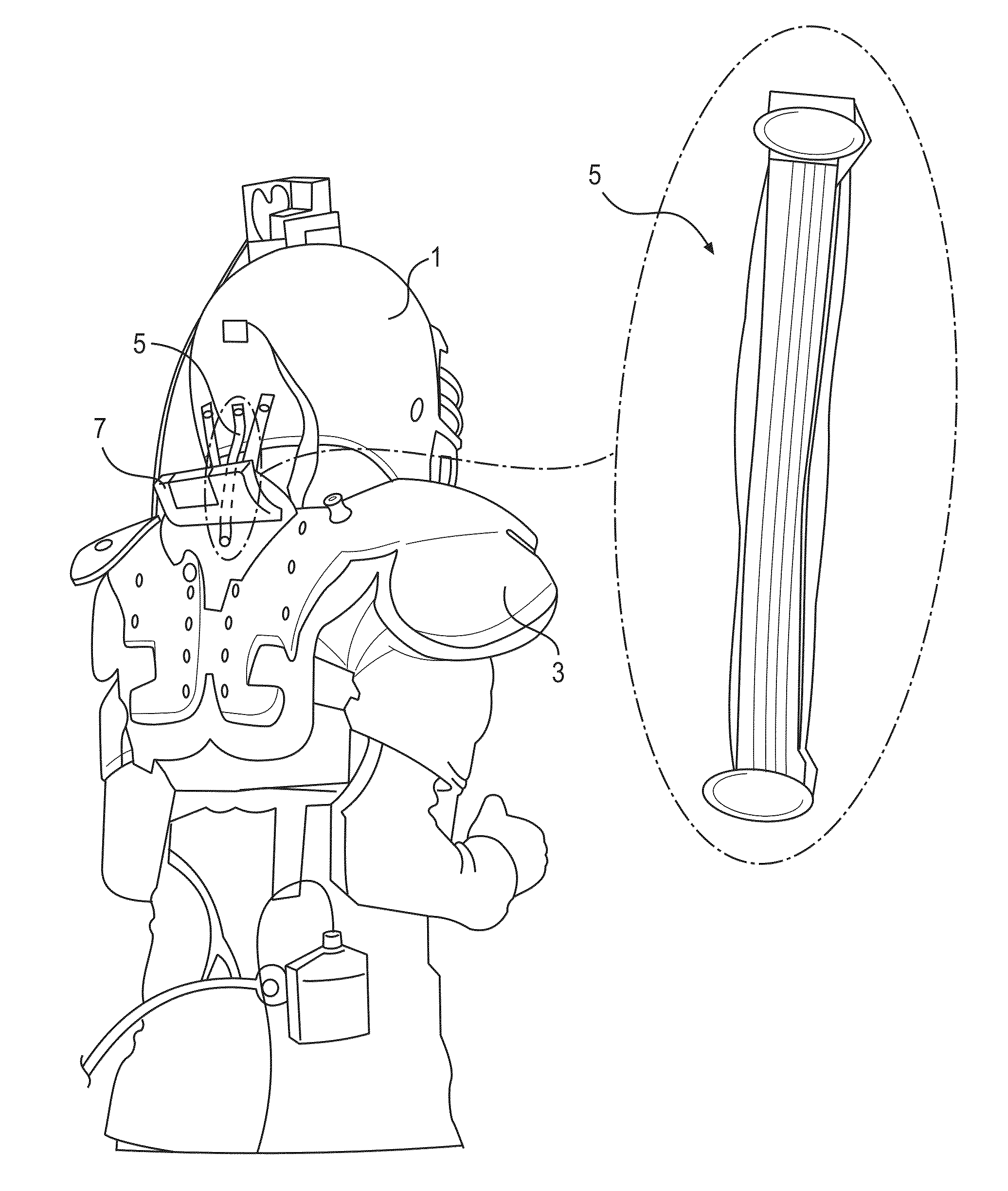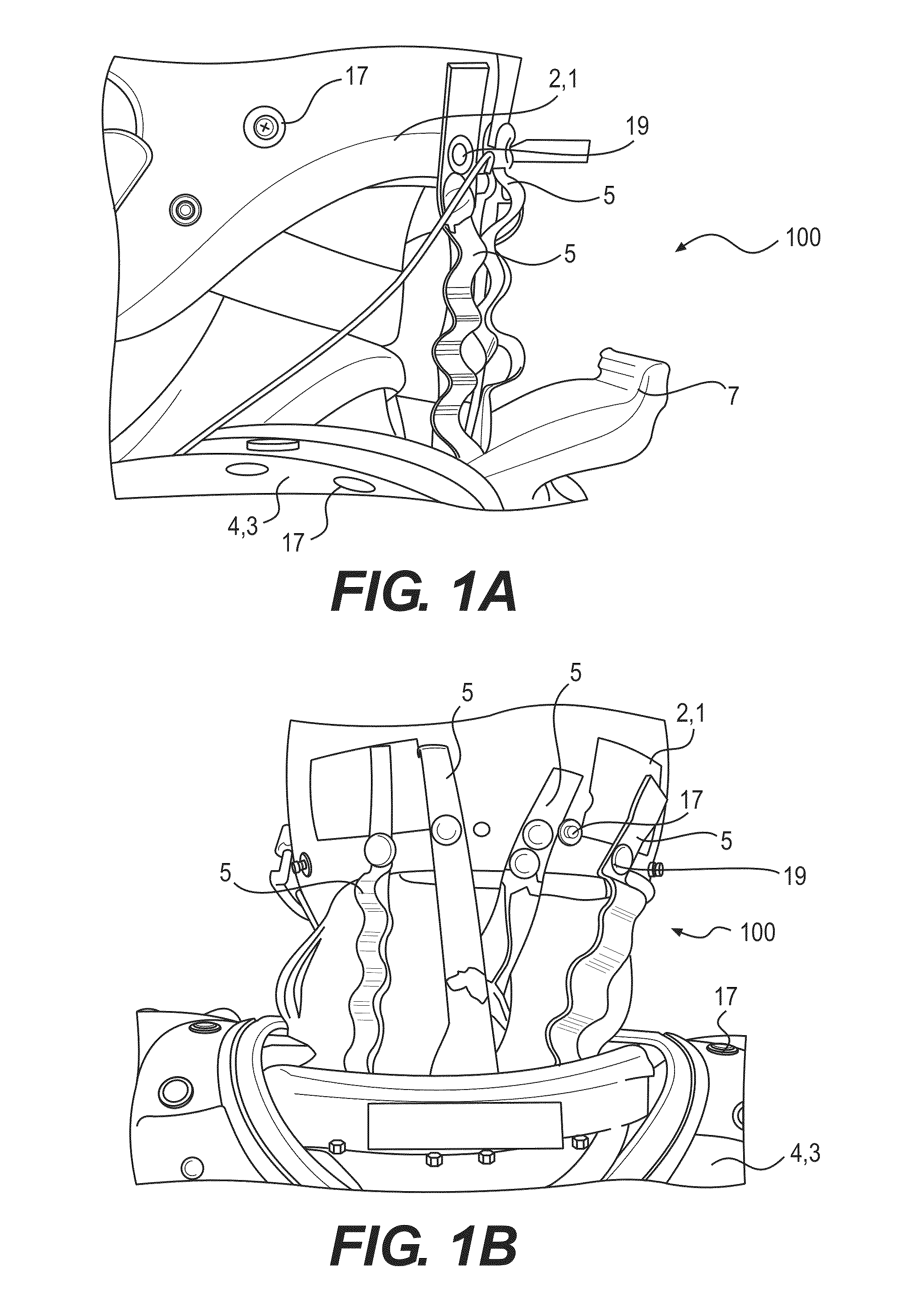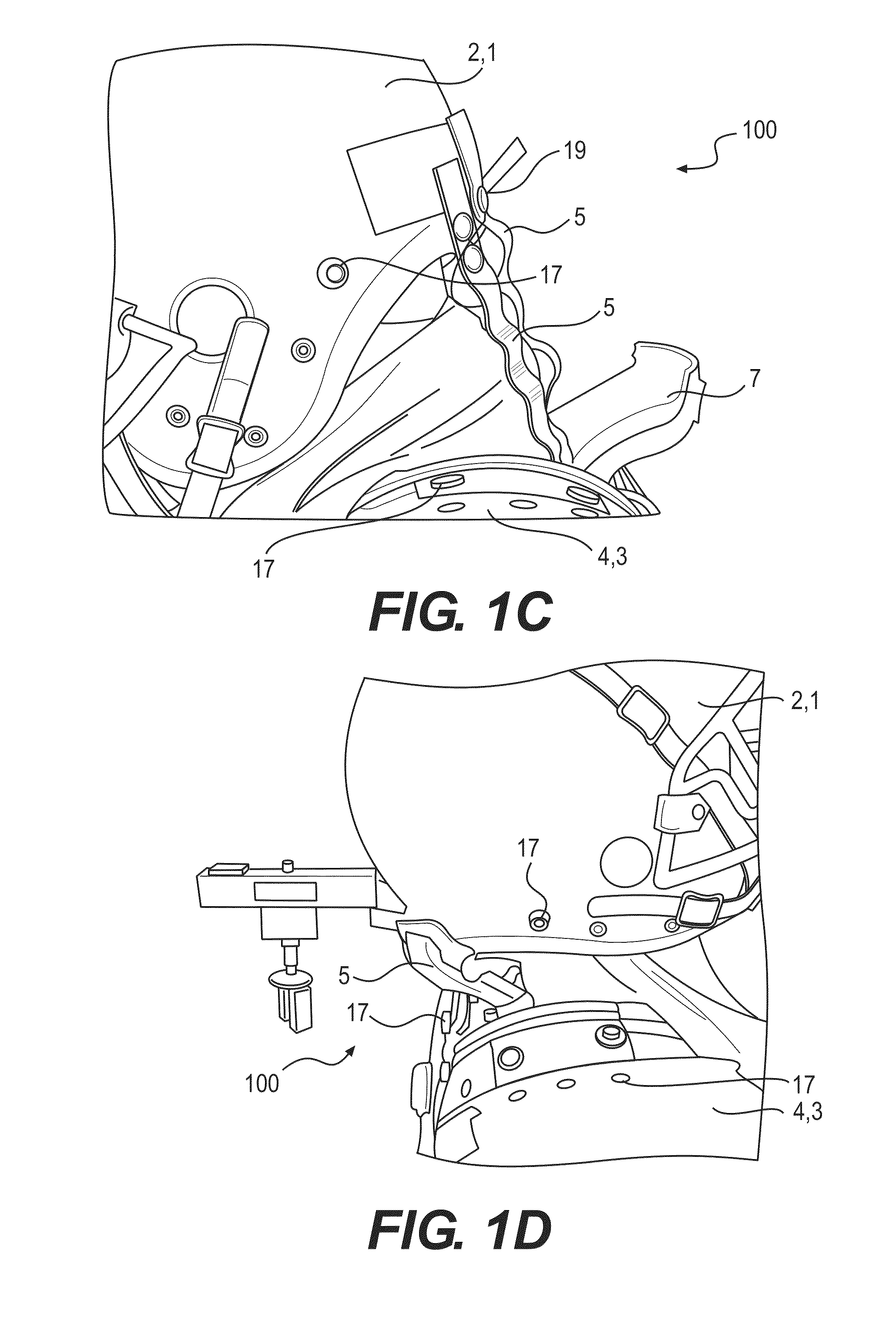Cervical spine protection apparatus and methods of use
a cervical spine and protection device technology, applied in the field of cervical spine protection devices, can solve the problems of helmets increasing the risk of neck injuries, unable to adequately protect the wearer from traumatic spinal injuries, and high impact sports posing a substantial risk of head and spinal injuries
- Summary
- Abstract
- Description
- Claims
- Application Information
AI Technical Summary
Benefits of technology
Problems solved by technology
Method used
Image
Examples
example 1
[0067]An exemplary embodiment of the cervical spine protection apparatus 100 of the present invention was constructed and evaluated to determine its biomechanical capabilities. As shown in FIGS. 1(a)-1(f), the cervical spine protection apparatus 100 was attached to a standard football helmet 1 and a brace 3 configured as conventional football shoulder pads having a platform 7. Visco-hyper elastic composite bands 5 of apparatus 100 were made from an elastic band 9 stitched to a substantially non-extendable band 11 constructed from stiff canvas cloth. A viscous silly putty material 15, filled the interior cavity formed between elastic band 9 and substantially non-extendable band 11. Four visco-hyper elastic composite bands 5 were removably secured with snaps between football helmet 1 and shoulder pads 3. As shown in FIG. 3(a)-3(b), strain-gage torque sensors were mounted to football helmet 1 to measure the sagittal plane dynamics, and positional, transitional and rotational sensors we...
example 2
[0078]In this computer model study, the difference in the response of a pediatric cervical spine to external loads in comparison to an adult cervical spine, both without and with cervical spine protection apparatus 100, were evaluated. Numerical models of a standard Hybrid III 6-year-old dummy and the standard Hybrid III 50th percentile male dummy were used in simulations conducted using the MADYMO software [TNO, 2004]. These dummies, and similar anthropometric models, are widely used in the automotive and aviation industry for injury risk assessment. Virtual sensors were used to measure the three dimensional linear acceleration of the head and the resultant forces and moments in the upper (at the C1 level) and lower (at the C7 level) cervical spine. FIGS. 9(a)-(g) illustrate the initial setup for the models with no protection, with regular football gear and with cervical spine protection apparatus 100 attached between a football helmet and shoulder pads.
[0079]In these simulations, ...
example 3
[0081]FIG. 11 shows the results of a tensile test conducted on an exemplary visco-hyperelastic composite band 5 at two different loading rates. The composite band 5 included a elastic band 9 stitched to a substantially non-extendable band 11 constructed from stiff canvas cloth. A viscous silly putty material 15 filled the interior cavity formed between elastic band 9 and substantially non-extendable band 11. FIG. 11 demonstrates that the stiffness of composite band 5 increases dependent on the loading rate of said composite band 5.
PUM
 Login to View More
Login to View More Abstract
Description
Claims
Application Information
 Login to View More
Login to View More - R&D
- Intellectual Property
- Life Sciences
- Materials
- Tech Scout
- Unparalleled Data Quality
- Higher Quality Content
- 60% Fewer Hallucinations
Browse by: Latest US Patents, China's latest patents, Technical Efficacy Thesaurus, Application Domain, Technology Topic, Popular Technical Reports.
© 2025 PatSnap. All rights reserved.Legal|Privacy policy|Modern Slavery Act Transparency Statement|Sitemap|About US| Contact US: help@patsnap.com



